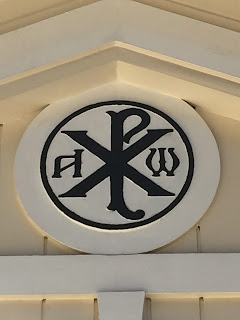Golden Istanbul Tour:
This is a special tour including some of the most unique places in the city but also which are difficult to visit on your own. The tour will take you to the roots of historic Istanbul with visit to the monuments of Byzantine and Ottoman cultural heritage. As the places of visit are all located out of the touristic centers, you will also have the chance to visit the current daily local life.
The first stop is Suleymaniye Mosque was built on the order of Sultan Suleiman the Magnificent and constructed by the great Ottoman architect Sinan. The construction work began in 1550 and the mosque was finished in 1557.The mosque is modeled in part on the style of a Byzantine basilica, particularly the Hagia Sophia, which was perhaps a conscious move on the part of the sultan to create a continuity and a symbolic connection with the city's past. Driving along the city walls will end at one of the oldest and most important churches in the city - The Church of Chora - representing fascinating wall paintings which tell the life of Christ in an historical order. Even though the building itself being small, the meaning was great for Byzantines as being founded at the borders of the city and welcoming the visitors. Today the environment is restored and this is a good place to spend time with local artisans and wooden houses.
After the church, we will have a tea-coffee break at one of the most splendid spots of Istanbul with a beautiful view over the Golden Horn - Pierre Loti Hill. Than you will again start drive but that time along the shores of Golden Horn through the towns Fener and Balat which are the old Greek and Jewish living sites. Fener Orthodox Patriarchate is located in the area as well.
After lunch, Our next destination will be the Dolmabahce Palace the last residence for Ottoman Sultans with 365 rooms and 22 saloons. Famous with the great collection of European antiquity, furniture and 4.5 tons chandelier. This will be our last stop after visit we will drive back to your hotel. End of the tour.
#Privateistanbulwalkingtours
#turkeyistanbultours
www.privateistanbulwalkingtours.com
www.turkey-istanbultours.com
Private tours in Istanbul, Istanbul tours, Istanbul tour, walking tours in Istanbul, food tours in Istanbul, Ephesus Tours, Cappadocia tours, Gallipoli tours, Turkey tours and Tripadvisor Istanbul tours.
This is a special tour including some of the most unique places in the city but also which are difficult to visit on your own. The tour will take you to the roots of historic Istanbul with visit to the monuments of Byzantine and Ottoman cultural heritage. As the places of visit are all located out of the touristic centers, you will also have the chance to visit the current daily local life.
The first stop is Suleymaniye Mosque was built on the order of Sultan Suleiman the Magnificent and constructed by the great Ottoman architect Sinan. The construction work began in 1550 and the mosque was finished in 1557.The mosque is modeled in part on the style of a Byzantine basilica, particularly the Hagia Sophia, which was perhaps a conscious move on the part of the sultan to create a continuity and a symbolic connection with the city's past. Driving along the city walls will end at one of the oldest and most important churches in the city - The Church of Chora - representing fascinating wall paintings which tell the life of Christ in an historical order. Even though the building itself being small, the meaning was great for Byzantines as being founded at the borders of the city and welcoming the visitors. Today the environment is restored and this is a good place to spend time with local artisans and wooden houses.
After the church, we will have a tea-coffee break at one of the most splendid spots of Istanbul with a beautiful view over the Golden Horn - Pierre Loti Hill. Than you will again start drive but that time along the shores of Golden Horn through the towns Fener and Balat which are the old Greek and Jewish living sites. Fener Orthodox Patriarchate is located in the area as well.
After lunch, Our next destination will be the Dolmabahce Palace the last residence for Ottoman Sultans with 365 rooms and 22 saloons. Famous with the great collection of European antiquity, furniture and 4.5 tons chandelier. This will be our last stop after visit we will drive back to your hotel. End of the tour.
#Privateistanbulwalkingtours
#turkeyistanbultours
www.privateistanbulwalkingtours.com
www.turkey-istanbultours.com
Private tours in Istanbul, Istanbul tours, Istanbul tour, walking tours in Istanbul, food tours in Istanbul, Ephesus Tours, Cappadocia tours, Gallipoli tours, Turkey tours and Tripadvisor Istanbul tours.
Food tours in Istanbul. The other tours in Istanbul, Off the beaten path Istanbul. Istanbul tours.




















